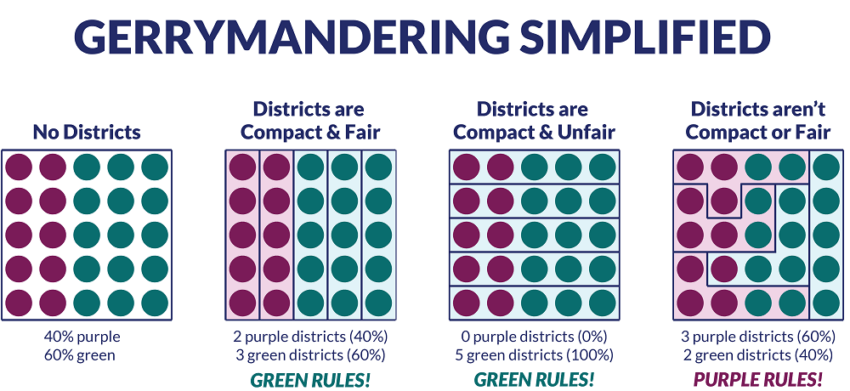AP (“How redistricting in Texas and other states could change the game for US House elections“):
Redistricting usually happens after the once-a-decade population count by the U.S. Census Bureau or in response to a court ruling. Now, Texas Republicans want to break that tradition — and other states could follow suit.
President Trump has asked the Texas Legislature to create districts, in time for next year’s midterm elections, that will send five more Republicans to Washington and make it harder for Democrats to regain the majority and blunt his agenda. The state has 38 seats in the House. Republicans now hold 25 and Democrats 12, with one seat vacant after the death of a Democrat.
“There’s been a lot more efforts by the parties and political actors to push the boundaries – literally and figuratively – to reconfigure what the game is,” said Doug Spencer, Rothgerber Jr. Chair in Constitutional Law at the University of Colorado.
Other states are waiting to see what Texas does and whether to follow suit.
The rules of redistricting can be vague and variable; each state has its own set of rules and procedures. Politicians are gauging what voters will tolerate when it comes to politically motivated mapmaking.
This is followed by some Explainer paragraphs that basically say that, while mid-cycle redistricting violates tradition, there is no Federal law precluding it and the Supreme Court has effectively signaled that politically-motivated redistricting is within the Constitutional prerogatives of states, so long as it’s motivated by partisanship and not race or other protected statuses.
And, indeed, we’ve been here before:
Texas has done it before.
When the Legislature failed to agree on a redistricting plan after the 2000 census, a federal court stepped in with its own map.
Republican Tom DeLay of Texas, who was then the U.S. House majority leader, thought his state should have five more districts friendly to his party. “I’m the majority leader and we want more seats,′′ he said at the time.
Statehouse Democrats protested by fleeing to Oklahoma, depriving the Legislature of enough votes to officially conduct any business. But DeLay eventually got his way, and Republicans replaced Democrats in five seats in 2004.
We blogged about it quite a bit at the time and, even though most of us were Republican voters at the time, cried foul. But none of us were surprised when the Supreme Court mostly upheld the move 19 years (!) ago. Indeed, we’d predicted it months before.
My co-blogger Steven Taylor dubbed this round “An Attempt at Blatant Election Manipulation” a few weeks back when President Trump first floated the idea. I don’t have much to add on that front. In a follow-up after California Governor Gavin Newsom threatened to retaliate in kind, he wondered whether “any of this is good for democracy.” It’s hard to imagine an argument in the affirmative.
Subsequently, other Democrats have joined in:
Washington Rep. Suzan DelBene, who leads House Democrats’ campaign arm, indicated at a Christian Science Monitor event that if Texas follows through on passing new maps, Democratic-led states would look at their own political lines.
“If they go down this path, absolutely folks are going to respond across the country,” DelBene said. “We’re not going to be sitting back with one hand tied behind our back while Republicans try to undermine voices of the American people.”
In New York, Democratic Gov. Kathy Hochul recently joined Newsom in expressing openness to taking up mid-decade redistricting. But state laws mandating independent commissions or blunting the ability to gerrymander would come into play.
And, not surprisingly, other Republican governors are jumping on the bandwagon:
Among Republican-led states, Ohio could try to further expand the 10-5 edge that the GOP holds in the House delegation; a quirk in state law requires Ohio to redraw its maps before the 2026 midterms.
Florida Gov. Ron DeSantis said he was considering early redistricting and “working through what that would look like.”
Alas, many Democratic states have tied their own hands via various initiatives that make partisan gerrymandering much more difficult. Many of them have delegated the power to independent commissions. While I support that in principle, as I argued three years ago, it amounts to unilateral gerrymandering disarmament when only one party is playing fair.
Click this link for the original source of this article.
Author: James Joyner
This content is courtesy of, and owned and copyrighted by, https://www.outsidethebeltway.com and its author. This content is made available by use of the public RSS feed offered by the host site and is used for educational purposes only. If you are the author or represent the host site and would like this content removed now and in the future, please contact USSANews.com using the email address in the Contact page found in the website menu.








